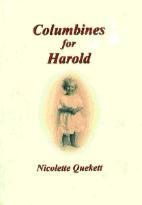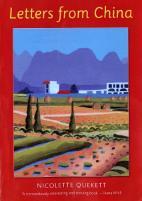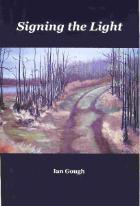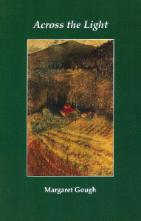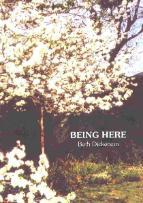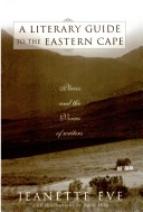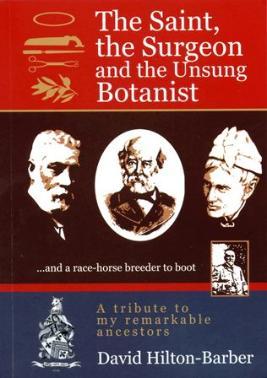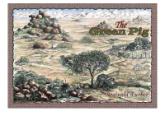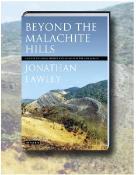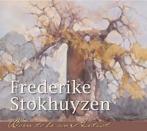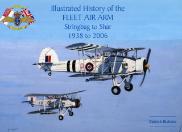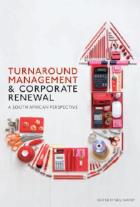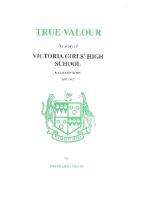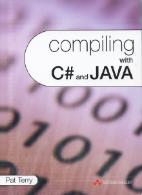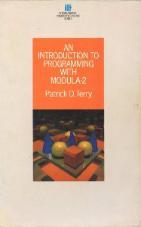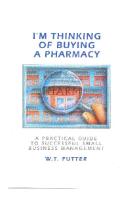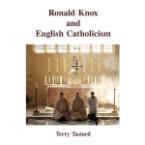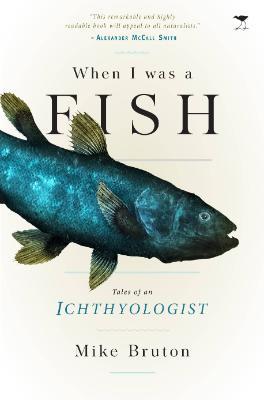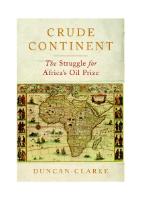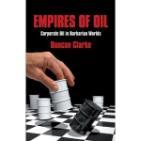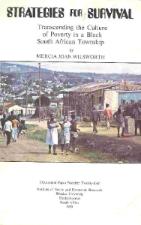Old Rhodian Authors 1930 to 1969
Please note that the year date depicts the first year the Author was at Rhodes and not the year the book was published.
Nicolette (Bodmer) Quekett (1936)
Recently published Columbines for Harold , is a biography of Nicolette’s father from the early years of his life in Geneva, Canada, Cambridge and then Rhodes. She also embarks on her own life journey, from an idyllic childhood in South Africa, through the Second World War and finally to find home and happiness in Western Australia. Along the way she slowly unravels a mysterious family secret. Why did her father take his life at the peak of his career? The answer is both shocking and yet compelling.
Letters from China is a Westerner's experience of teaching English in deep, rural China in the critical years of the eighties and early nineties. These fascinating letters home were written by a woman who was alone in the depths of China during the turbulent year of the Tienanmen Square uprising. Nicolette, in the days before email, was cut off from official help and reliable information. Yet she was supported in her isolation by the friendship of her Chinese students and teaching colleagues, who are described with great affection. Their stories, and the meticulously recorded detail of daily life in China, with all its problems, frustrations and contradictions, bring the country and its people freshly before our eyes. Nicolette's is not the China of the sanitized conducted tour. It is the real China.
The Right Reverand Bill Bendyshe Burnett (1938)
The Rock that is Higher than I - The Autobiography of The Right Rev Bill Bendyshe Burnett
Edited by Andrew (1967) and Barbara (1967) Burnett
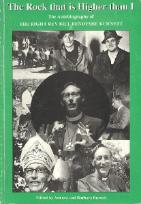
Born in the Orange Free State, Burnett became bilingual in English and Afrikaans and was schooled at Bishop's College in the Cape and at Michaelhouse in Natal before entering Rhodes University (1938). He taught for a short time in 1940 at Umtata before joining the South African Defence Force. He was captured in North Africa and became a PoW in Italy. He escaped and in 1944 came into the care of the British forces. The exigencies of war as they affected public worship kindled his dissatisfaction with denominationalism.
His ordination training was at St Paul's, Grahamstown, and he went as deacon in 1946 to St Thomas's, Durban. In 1950 he became Chaplain at Michaelhouse and there wrote Anglicans in Natal (1953). In its prologue he writes significantly: 'It was a divided church that eventually planted the gospel in southern Africa.'
He became Bishop of Bloemfontein in 1957 and led the work there for 10 years. His work with his episcopal colleagues, notably Robert Selby Taylor, who was to precede him as Archbishop, brought him into the debate about the future of the then Christian Council and decisions to take forward the church unity process. The change to the SACC was both geographical from Cape Town to Johannesburg, and also structural. Between 1967 and 1969 Burnett as General Secretary led the reconstruction.
It was close to the time when the influence of the World Council of Churches and the Programme to Combat Racism made public headlines. Burnett's contribution to the dialogue at home and overseas was important. But it was evident that his labours also brought great tension to one who was fundamentally a shepherd of souls. In 1969 his own church called him to become Bishop of Grahamstown and he readily accepted. He said: 'It was a relief to return to a real fellowship in Christ.'
Burnett had always been an outspoken critic of apartheid. What began at Bloemfontein, when he had spoken against the policy and doctrine of race separation, was carried forward in the five Grahamstown years. Always his critique and protest were based on his commitment to the word of God. Undoubtedly his continued devotion to scripture influenced his 1972 experience.
Just before his enthronement as Archbishop in 1974 Burnett took part in a great charismatic renewal campaign which swept across much of the Republic of South Africa. This marked the confluence of his zeal for ecumenism and pentacostalism. It is remarkable that these influences found root in a bishop of a province with deep formal traditions.
Many hopes were raised when in 1974 this indigenous bilingual bishop was called to Cape Town. It was a coming-of-age for South African Anglicanism. He was destined to be a forerunner of the time when another indigenous bishop, Desmond Tutu, would succeed to the throne. At his enthronement Burnett called for a new Pentecost. At that time South Africa was debating the problem of conscientious objection to national service. The SACC had published a resolution about the injustice involved. In the presence of the President and the military he gave the resolution his support knowing that he had himself taken a comparable stand as a young man. His passion steeped in ecumenism, charismatic renewal and traditional ecclesial faith was unmistakable.
Burnett's retirement in 1981 left him free to offer his services to the renewal movement. He had led the charismatic bishops at the Lambeth Conference of 1978. He travelled world-wide in the campaigns for renewal and established friendships with kindred evangelists. He edited their publication By My Spirit in 1988 and in 1993 his autobiography The Rock that is Higher than I was published.
David Brokensha (1940)
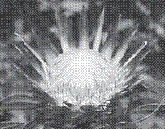
Brokie's Way: An Anthropologist's Story. Love and Work in Three Continents is an autobiography on David's fascinating life. In analysing why anybody would want to read his life story, David wrote an introduction in answer:
" I have tried to analyse how my four main identities affected my life and also how they have changed over time. The first two identities are "ascribed", in that I was born with them - being a white South African, and being gay. The other two identities - being a Catholic, and being a social anthropologist - are "achieved", in that I deliberately assumed them.
David grew up in South Africa in the 1920s and 1930s. He spent three years during World War 2 as a prisoner of war, then studied at Universities in South Africa and England, followed by a period in the British Colonial Service in East Africa and in urban African administration in Rhodesia, followed by teaching and research at the Universities of Ghana and of California and several years of fieldwork in Kenya. For nearly fifty of his eighty-four years he shared his life with Bernard Riley. They retired to Britain in the 1990s, and finally moved back to the new South Africa. The book is a love story, as well as the story of their lives in three continents, Africa, North America and Europe.
Published by Amani Press, Fish Hoek. david@fishhoek.com © David Brokensha 2007 ISBN 978-0-620-39064-4
Prof Ian Gough (1940)
Currently living in Canada, Ian is a retired professor of physics and researcher in Geophysics who discovered a taste for writing poetry during his last scientific field work in South Africa. With the encouragement and guidance of his sister Margaret, his wife Wendy and his daughter Catherine, Signing the Light was published by Trafford Publishing. ISBN 1-4120-9633-2.
Margaret Gough (1941)
Award-winning Port Elizabeth poet, Margaret Gough, has written her second collection of poems called, Across the Light. She lived in Grahamstown for many years when her husband Steve Geldenhuys was headmaster of Graeme College. Margaret obtained her masters degree in Psychology and English at Rhodes and was also a member of staff in the English Department. She subsequently worked as a psychologist in Cape Town before returning to Port Elizabeth in the 1980’s
Brian Ross (1945)
Living in Western Australia, he has published An Irish Nurse in Africa. This is a limited collector's edition of only 200 copies which is self-published and Brian has full copyright.
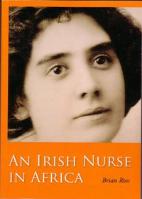
An Irish Nurse in Africa deals with the 2de Vreiheids Oorlog/Anglo -Boer war. The story is of an Irish nurse working in the Cape when she is pulled into the war. Unbeknown to her, her runaway brother has succeeded in business in the Orange Free State and fights for the Boers. The book will appeal for those interested in historical novels. Please see below the Synopsis and Poster Launch. The photograph shows Brian and his three daughters.
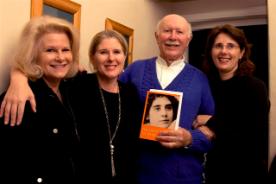
Brian Ross and family
Doreen Court (1946)
Succulent Flora of Southern Africa, first published in 1981 has long served as an authoritative botanical reference. This third edition takes into account intervening taxonomic advances and the discovery and naming of ever more species. A hands-on identification guide, it presents succulent species from eight families that are most often encountered in collections. Descriptions include the characters of the species and their distribution in southern Africa. Representatives of each group are illustrated in colour or with sketches and photographs in black and white. This updated work furthers the knowledge and study of these extraordinary, very specialised plants.
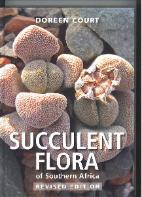
Succulent Flora
To order the book, please contact Kim at kimr@randomstruik.co.za
Beth Dickerson (1946)
Beth was born in 1928 in Lesotho and grew up in the Eastern Cape, but has lived in almost all the other provinces of South Africa at different times, and also in Zimbabwe. After leaving school Beth served in the Special Signals Services for a year, before taking her first degree at Rhodes. She had several spells in England where she studied and taught drama and English but, in 1966, returned to Grahamstown to establish the drama department at Rhodes University under Guy Butler. Besides teaching, she directed many plays during the next 27 years. Although the main focus of her working life was drama, Beth has always written short stories and poetry for which she has won a number of awards.
Being Here focus is generally clear: a single memory, a single landscape enjoyed, a single animal acutely observed. A few remember childhood or travel abroad, but most are of the Eastern Cape. Some are very short - both lines and poems - and the poet always seems to know exactly when and where to end them.
Peter Brian Neville Jackson (1946)
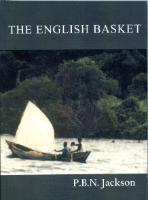
Peter Jackson was born in Bloemfontein 1923 and grew up in the southern Free State. He studied at St Andrews College and Rhodes University where he got enthralled with biology and decided upon an applied career. Seeing no future in this direction at Rhodes he obtained his MSc at UCT, pioneering the technique of underwater research. After a sojourn as a pilot in the RAF during the Second World War he set out to establish many of the fishery centres in East and Central African. He was thrown into important managerial positions at an early age and carried out foundation basic and applied studies leading teams of researchers in this field. Returning to a post in the JLB Smith Institute in the 1970s he then promoted the establishment of a Fishery Science degree at Rhodes University and was instrumental in many of the pioneer studies of this kind in South Africa. In his later years he served his alma mater in many ways and used his environmental knowledge in helping to establish Coastal & Environmental Services. He died in 2007 after completing his memoirs and his Fisheries Experiences in Central and East Africa, The English Basket, which was then edited and published by his sons.
(Compiled by Prof Roy Lubke for the Book Launch held at Rhodes University)
Jeremy Shearar (1949)
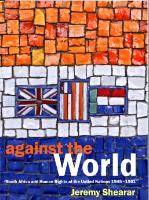
Against the World maps South Africa’s journey to increasing isolation in the United Nations, from a respected member in 1945 to a ‘pariah’ in the early sixties. Events unfold from 1945, when Field Marshall J.C. Smuts proposed the adoption of a Preamble to the United Nations Charter. Three years later, South Africa refused to sign the Universal Declaration of Human Rights. Global criticism against apartheid intensified, until in 1960 it culminated in calls from African members for economic and diplomatic sanctions. By 1961, South Africa had become isolated in the United Nations and relegated to a moral wilderness. For the modern reader of history and social affairs, the book clarifies South Africa’s past and present role in the evolution of international humanitarian law. As South Africa’s Ambassador and Permanent Representative to the United Nations in Geneva and New York, author Jeremy Shearar had direct access to primary material. This led to his unique insights and his more comprehensive reflections on the tensions between governments and officials in relation to events.
Jeanette Eve (1951) and Basil Mills (1984)
A Literary Guide to the Eastern Cape: places and the voices of writers , published in 2003 by Double Storey and written by Jeanette Eve with drawings and photographs by Basil Mills. To place orders for the book please e-mail jandeve@telkomsa.net
Steve Murray (1951)
Why Do Aircraft Crash? Pilots and Their Limitations is an invaluable guide to pilots both general and commercial – and anyone who’s’ considered taking to the air. Today, most aviation accidents are the result of human limitations, not mechanical failure. How can pilots best deal with their limitations to avoid accidents? Steve Murray explores physical and mental limitations, the interface between humans and computers, human error, and problems with human communication. He explains decision making and the problems of stress. And he examines accident analysis, with a special focus on gliders. Steve started his flying career with the South African Air Force in 1952. Nearly 60 years later, he continues flying on a private pilot's licence. With a lifelong, passionate involvement in the practice and study of aviation with a D.Litt in aviation psychology, Steve has an extraordinary wealth of experience and unique insight into aviation accident causation.
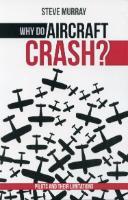
Book available at amazon.com and Kalahari.net
Richard Buckland (1952) and Thelma Neville
Journalists Richard Buckland and Thelma Neville commemorate the centenary of Rhodes University with this richly illustrated, engaging account of the university's history from its inception in 1904.
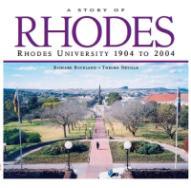
Thelma has a long acquaintance with Rhodes and was at one time press officer for Rhodes. At the height of apartheid, she served as chief organiser of the successful International Woman's Convention held in Grahamstown.
Richard was a student at Rhodes in the early 1950's and later became a broadcaster and journalist in Northern Rhodesia and the former Federation of Rhodesia and Nyasaland. Richard returned to Rhodes, first as public relations officer and subsequently as director of public relations. following his retirement, he served as editor of Grocott's Mail.
David Hilton-Barber (1953)
Footprints: On the trail of those who shaped Tzaneen's history is an idiosyncratic view of one of South Africa's loveliest districts. History is certainly revealed, but the book is much more than dry-as-dust facts and chronologies. The mountains and valleys and abundant vegetation of the northern Drakensberg have inspired many people. Their stories enliven almost every page. As Tito Mboweni states in his foreword: 'This is a book about Tzaneen, the vast splendour of its mountain ranges, the historical events that shaped its history, its rich cultural heritage and, above all, the strength and determination of the many people who have left their footprints here."
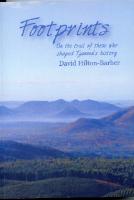
Books available from Porcupine Press
David Hilton-Barber (1953)
The Saint, the Surgeon and the Unsung Botanist.
The stories of Frederick York St. Leger (the saint), Dr William Guybon Atherstone (the surgeon) and Mary Elizabeth Barber (the botanist), are told within the framework of the history of their times and the context of the Hilton-Barber family.
http://www.antiqbook.com/boox/fabl11/22997.shtml
Hobson’s choice
David Hilton-Barber (1953)
More than all his achievements as a botanist and a pioneer in the development of the sub-tropical fruit industry, Len Hobson is synonymous with the early days of farming in the Karoo, and this is a cameo of his memories of growing up as a member of an early settler community in the Graaff-Reinet area in the 1930s, his youthful exploits, his exposure to the poverty of the poor whites at that time and his grief at losing his siblings and later, two of his wives.
Sure, he is one man whose name stands proud in agriculture in South Africa, but Hobson is more than a brilliant horticulturist. Yes, he is registered as Professional Natural Scientist (Agriculture Science) with the SA Council for Natural Science Professions. He is a humble soul who has never lost touch with the simple side of life. He is a down- to –earth man of the soil, no pun intended.
The Baronet and The Matabele King – The Intriguing Story of The Tati Concession
David Hilton-Barber (1953)
The concession to mine gold at Tati was granted to a British baronet, Sir John Swinburne, by Lobengula, last king of the Matebele. Although called by colonial imperalists a “savage king” and a “native despot”, Lobengula was “exceedingly well-made (in height about 6 ft 10 inches), corpulent with a commanding presence and when in a good temper having a kind heart and full appreciation of humour.”
The gold at Tati, which was discovered by the geologist Carl Mauch, was actually on the site of pre-historic diggings that had been mined there 400 years previously by the makalanga people. Tati lay on the missionary road to the north, used by Livingstone and Moffat, and it was part of Cecil Rhodes’s dream of continuous tract of British imperialism from Cape to Cairo. The annexation of Bechuanaland was a direct result of the conflicts between the tribes within the area and the threats from President Kruger and from Germany which had recently colonised Angra Pequena.
Gold from the early diggings here found its way to Great Zimbabwe and the famous golden rhinocerous from Mapungubwe was probably fashioned from gold mined at Tati. This forgotten corner of the sub-continent encapsulates a chapter of our history involving five countries, powerful man, much subterfuge, a botched invasion, a rebellion, land annexation, prospectors, hunters, traders and adventurers. It is a story begging to be told.
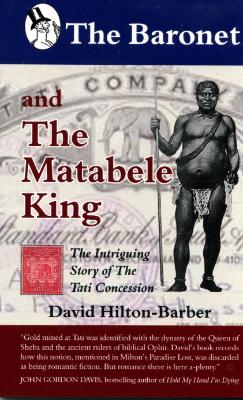
Angela Read-Lloyd (1953)
The Artist in the Garden – The Quest for Moses Tladi
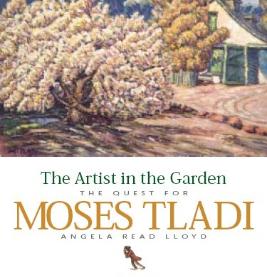
This wonderfully illustrated book uncovers the life and works of one of our hitherto forgotten artists, Moses Tladi. Discovering South Africa’s first black artist working in an international style is a revelation and, like Monet, who was his first inspiration, Moses Tladi was also a gardener.
Born in remote Sekhukhuneland, east of Pretoria, South Africa, the son of a medicine-man who made a living by working in iron, and a mother who was a gifted potter, Tladi in his early childhood herded cattle in the dramatic hill-country around his home.
His parents had become “believers” under the influence of the Berlin Missionary Society and he was educated at the Lobethal mission, at ga Phaahla. Tladi, like many young men of the time, went to the cities in search of work.
It is not known how he encountered Herbert Read, but in the mid-1920s he found employment in Johannesburg as gardener to Read at his property in the fashionable suburb of Parktown.
Tladi’s talent was discovered by Herbert Read’s daughters who were schoolgirls in the mid-1920s. Read took Tladi under his wing, and introduced him to the collector and philanthropist Howard Pim. Read and Pim promoted Tladi at public exhibitions from 1929 onwards. Pim died in 1934, but Tladi continued to flourish, with Read as his patron until the outbreak of the Second World War.
The author, Angela Read Lloyd (granddaughter of Herbert Read) was intrigued by the work of this artist and the relationship with her family. The two schoolgirls were her aunts and although Tladi had left when Angela went to live at the family home, Lokshoek in Parktown, Johannesburg, she grew up with his pictures on the walls and her childhood world was the paradise garden Tladi and Read had created together.
Following the author’s early researches and discoveries, Moses Tladi appears to have been the first black artist to exhibit formally in South Africa. He was certainly the first black artist to exhibit in the South African National Gallery, and achieved wide acclaim. Today the Museum Africa in Johannesburg has three of his works, whilst most of his work is contained in private collections or with his family.
Uncovering and putting together the puzzle- pieces of the life of this gentle artist has resulted in a publication that tells an African story and also brings back into the public view the brilliance of his work half a century after his death.
Because of the sporadic nature of the discoveries, the scant information about Tladi’s everyday life, and the development of the author’s friendship with the Tladi family, especially his daughter Rekiloe, this is a human story rather than an academic outline of an artist’s life. It is a narrative of the search for a fine artist, who flowered in the 1920s and 1930s and died in 1959, tragically a victim of apartheid.
Skilfully researched and sensitively written, The Artist in the Garden – The Quest for Moses Tladi is a poignant and personal story relating to a wider world of art, family, home, love and loss against a background of the dramatic events that have encompassed all of us since the dawn of the new South Africa.
Duncan Buchanan (1954)
Breaking a Mould: Memories of a Bishop
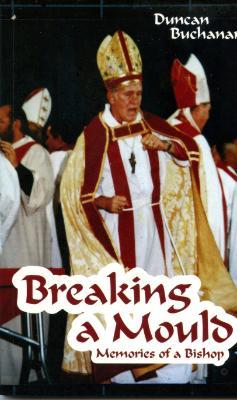
Duncan Buchanan believed that the church lives to be God’s influence for goodness and truth in society. He loved to teach and write and was convinced that the church all the people of God in South Africa, have a responsibility to set an example in terms of integrity, honesty, morality, work ethic, faithfulness in relationships, servant leadership- to fulfil Desmond’s dream of a ‘rainbow nation’ and God’s will for our ‘new’ democracy.
This book, Breaking a Mould, the text of which was completed shortly before he died, is based on his memories of 14years he was Bishop of Johannesburg, spanning some very turbulent and difficult years in the history of South Africa.
Available at: Pretext publishers
Reginald Furber (1955)
Author of The Green Pig which is based on his and his police reservist companions during the Rhodesian Bush War in the late 1970's. The book is a very easy yet fascinating read on a unique society now largely consigned to the dust bin of history, as well as a reminder of an impossible dream ultimately destroyed by the demise of colonialism.
Copies of The Green Pig are available and for sale (R120) by contacting Reg Furber at amandafurber100@gmail.com or PO Box 890216, Lyndhurst 2106, telephone: 011 882 2552
Submitted: November 2009
Pollen Wasps and flowers in southern Africa
Sarah K. Gess (1955) and Friedrich W. Gess (1955)
This work is a treatment of pollen wasps as distinct from wasps in general and particularly of pollen wasps of southern Africa.
The pollen wasps are behaviourally distinct from all other aculeate (stinging) wasps. Indeed in behaviour they are bee-like. Like bees, they evolved from predatory wasps that, like most modern aculeate wasps, hunted insects or spiders for feeding their larvae. The pollen wasps, like the bees, are not hunters. They collect pollen and nectar from flowers for provisioning their nest cells. The change from hunting invertebrates to collecting pollen nectar, evolved in parallel-the bees and the spheciform wasps being grouped as Apoidea and the pollen wasps and the co-evolved wasp families, including the ants, as Vespoidea.
Western southern Africa is particularly rich in pollen wasps where they are of importance as flower visitors and pollinators. Indeed it is the area in the world with the greatest species diversity of these wasps, the greatest number of which are associated with mesembs (Aizoaceae: Mesembryanthema) (45%) and/or composites (Asteraceae) (49%), both of which are similarly remarkably species diverse. In addition, and of particular interest, are close associations of some other species of pollen wasps with other plants of which they are in many instances the sole or most dependable pollinators.
Van Schaik
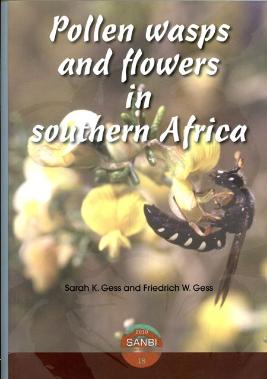
Wasps and bees in South Africa
Sarah K. Gess (1955) and Friedrich W. Gess (1955)
In order to maintain essential populations of organisms, be they plants or animals, it is necessary to have an understanding of their requirements. In this work, the authors have compiled all that is known for southern African of the biology of wasps and bees, important pollinators and predators, and have shown how agricultural land use and coastal development impact on the diversity of wasps and bees. The principal focus is the semi-arid to rid areas- the authors’ main study areas over the past 40 years. The work is intended for all who are interested in natural history, conservation and farming, and as a starting point for further observations and research.
“This will be valuable work for the intended audience. The Gesses are the only scientists that could produce such a work for the southern African region. The work is an amazing compilation of hard-won data, most of it having been collected by the Gesses themselves. It will be highly useful to future researchers.”
Prof. Kevin O’Neil, Montana State University,
United States of America
Author of Solidarity Wasps: Behavior and Natural History
Cornell University Press
“This [book] is part of the culmination of a lifetime’s work on bees and wasps. I do not think that there is part of another country that has as detailed an account of their bees and stinging wasps’ food plant and nesting biology as presented in this [book].”
Dr Connal Eardley, Biosystematics Division,
Plant Protection Research Institute,
Agricultural Research Council, Pretoria, South Africa
Van Schaik
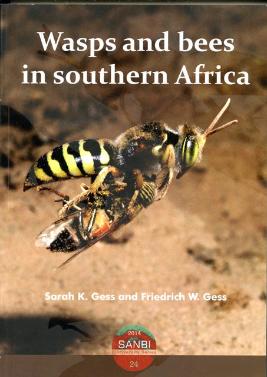
Sarah K. Gess (1955)
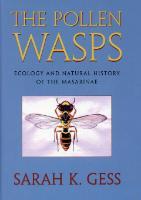
Wasps of the subfamily Masarinae are sometimes called "pollen wasps" because they are the only wasps that - like bees- provision their nest cells with pollen and nectar. Numbering a little over 300 known species, they favour regions of the world with hot, dry climates and scrubby vegetation, and are especially plentiful and diverse in southern Africa, where Sarah K. Gess has made the study of aculeate Hymenoptera, including these fascinating insects, her life's work.
Harvard University Press, Cambridge, Massachusetts, London, England.
John Goldsmid (1955)
The Deadly Legacy tells the fascinating story from both biological and historical viewpoints, of Australia's experience with imported diseases. Within 15 months of the arrival of the First Fleet in Sydney Cove, in 1788, the first cases of smallpox among local Aborigines were observed. Then came typhoid, diptheria, measles and a host of other introduced diseases which spread rapidly through the Aboriginal population and proved to be more life-destructive than actual conflict with the white settlers. Whole tribes were decimated and their very existence as a people was threatened by the arrival of foreign infectious diseases. The story of Australia's experience with imported diseases is only now being fully recognised despite its profound impact on many aspects of our history.
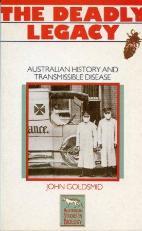
Gerrit Verschuur (1955)
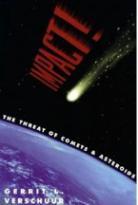
Gerrit L. Verschuur is an adjunct Professor in the Physics Department, University of Memphis, former City Council member in Lakeland, Tennessee, a town just outside Memphis and is married to Dr Joan Schemiz, a solar X-ray astronomer who teaches at the university. He has published approximately 100 scientific papers and a like number of popular astronomy articles and still does research and publishes papers on interstellar matter. Professor Verschuur also holds several patents and is the author of the following books:
The Invisible Universe: The story of Radio Astronomy. (Springer-Verlag 1973) Nominated for National Book Award.
Galactic and Exragalactic Radio Astronomy - Co-editor with K.I.Kellerman (Springer-Verlag, 1974) Also in Russian translation.
Cosmic Evolution: Introduction to Astronomy - A textbook, with G.B. Field and C. Ponnamperuma. (Houghton-Mifflin, 1978) Also in Japanese translation.
Starscapes - (Little-Brown, 1977)
Cosmic Catastrophes - (Addison-Wesley, 1978) - Also in Dutch and Japanese translations.
The Invisible Universe Revealed: The Story of Radio Astronomy - (Springer Verlag, 1987) Die Phantastishe Welt der Radioastronomie - German translation (Birkhauser-Verlag, 1988)
Galactic And Exragalactic Radio Astonomy - 2nd edition, co-edited with K.I. Kellermann. (Springer-Verlag, 1988)
Insterstellar Matters (Springer-Verlag, 1989)
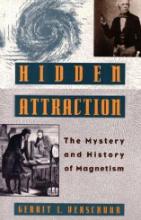
Hidden Attraction - (Oxford University Press, 1993) Paper back edition - March 1996 - Japanese translation - September 1997
Impact: The Threat of Comets and Asteroids - (Oxford University Press (1996) Japanese translation September 1997
The Invisible Universe - 2nd edition (Springer, 2007)
Source: http://www.amazon.com/Gerrit-L.-Verschuur/e/B001H9XCRQ
Peter Ginn (1956)
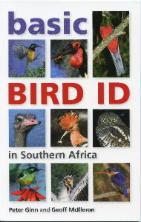
Peter trained as a geologist, but soon discovered that his real vocation was showing others the wonders of the world in which we live. He has done this for over 40 years through teaching. Initially, geography and Geology to boys preparing for O & A Level, but latterly through the planning of natural history trips for adults and children.
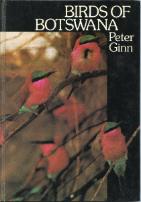
He learned bird photography so that he could use the slides for talks on birds. He created of a series of books on birds for beginners (Birds Afield) to keen bird-watchers (Waterbirds etc) and finally a book for experts and all bird watchers in southern Africa, (The Complete Book of Southern African Birds)
He retired as a teacher in 1989 and turned his talents to planning and executing tours for visitors to Botswana, Namibia, Madagascar, South Africa, Zambia and Zimbabwe. These tours are planned using his broad knowledge of the natural history, especially the birds, of Southern Africa to create something special for each group. His knowledge of natural history in general makes each trip a special one. Where the group is especially keen on birds, Peter's specialist bird knowledge of over 700 southern African bird species makes the trip something special. He is able to impart this knowledge in a way that even the non-birder will come to appreciate the variety of birds habits and requirements of their habitat. Peter is a specialist bird photographer, but also has extensive experience in general game and natural history photography. In recognition of the excellence of his photography, he has been elected as an Associate of both the Royal Photographic Society of Great Britain and the Photographic Society of Southern Africa. He can therefore help clients to maximise their photographic opportunities on tour.
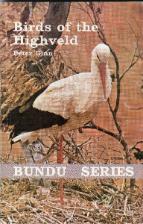
BOOKS:
Zimbabwe Bundu Series Books:
Birds of the Highveld (1972)
Birds of Great Zimbabwe & Environs (1973)
Birds Afield (1973)
Birds of the Lowveld (1974)
Bird Safari (1974)
Books on Southern Africa:
Birds of Botswana (1979)
Garden Birds of Southern Africa (1980)
More Garden Birds of Southern Africa (1981)
Waterbirds of Southern Africa (1982))
Conceptualizer and general editor for:
The Complete Book Of Southern African Birds (1989)
(The definitive book on the birds of the sub-continent with most birds illustrated by slides - over 100 by Peter Ginn)
Peter's photographs have been used in many bird books worldwide.
Magazines:
A regular contributer of articles to magazines such as Birds & Birding, Honeyguide, Zimbabwe Wildlife, ZTA Magazine, etc.
Source:
Peter Ginn (1956)
The Ultimate Companion for Birding in Southern Africa
Brought to you by best-selling authors, Peter Ginn and Geoff McIlleron, this really is the ultimate companion for exploring souther Africa's abundant bird life. The most powerfully visual bird book ever for southern Africa. Two volumes with over 1400 photographs of birds covering all 960 species recorded. Fascinating descriptions from 18 top bird authorities who reveal their personal observations and knowledge in an easy to read style.
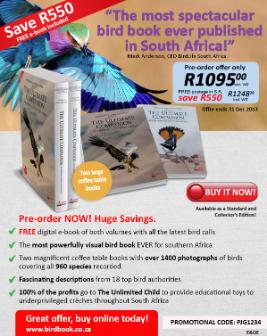
24 years after the record-breaking success of his last big book, The Complete Book of Southern African Birds, Peter Ginn has done it again. Four years in the making, The Ultimate Companion for Birding in Southern Africa takes bird books as we know them to a whole new level with his incredible insight, specialist bird knowledge and exceptional photography. An Associate of the Royal Photographic Society and the Photographic Society of Southern Africa, Peter pioneered the use of photographs to illustrate bird books in the 1970s, and has already put together more than 10 iconic bird books for the southern African region, each one building on the success of the previous one.
Limited offer: Save R550 AND get a FREE e-book valued at R350 - www.birdbook.co.za
Dr Jonathan Lawley (1956)
Jonathan was born in India in the North-West Frontier Province and after school and University in what was then called Southern Rhodesia, South Africa and Cambridge he joined the British Colonial Service in Northern Rhodesia and served in pre-independence Zambia. He has lived and worked throughout Africa, including the Congo, Zimbabwe and Namibia. He has written Beyond the Malachite Hills which is an account of his colonial career in Africa and its struggle in throwing off the colonial past, embracing modernity and gaining in pride and self-confidence. Rich with insight and written with passion, Beyond the Malachite Hills should be read by every diplomat setting off on an Africa posting, not to mention well meaning aid workers and gap-year students.
Order form for Beyond The Malachite Hills
Frederike Stokhuyzen (1956)
Born to be an Artist is a book that will delight those who appreciate fine works of art. This exquisite publication features a wide selection of Frederike Stokhuysen's paintings over the past 50 years. South African landscapes, treescapes, rockscapes, flowerscapes and wildlife are the embracing themes of her work. During extensive travels throughout southern Africa and further afield to collect her subject matter, she executes watercolours or pen-and-wash drawings on the spot in order to capture the full impact of each place and ensure correct proportion and perspective. Later, in her studio, her oils are painted exclusively with a palette knife, a technique that gives her work a dramatic and unique quality. Her training in design - in particular stained glass design - is evident in the stylisation and abstract composition of so many of her paintings.
Visit her website on http://www.frederikestokhuyzen.net/
email address - jandfwhite@y.co.za
Tony Petter Bower (1957)
Poetic Memorabilia of African and other travels, is a compilation of poetry that were originally written for specific events concerning Bower’s trips with his family, be it birthdays or weddings or such like. The style in which the poetry is written is one to be over looked by purist as the main focus was on the delivery of the poems and not the necessary technicalities behind writing poetry.
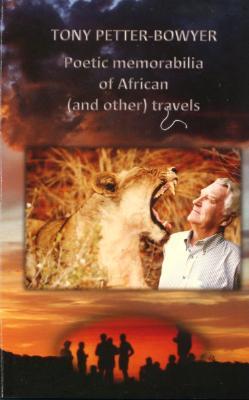
Hugh Lewin (1958)
In July 1964 Hugh Lewin was held under the country’s 90-day detention law and later sentenced, with other members of the African Resistance Movement, to seven years’ imprisonment for protest sabotage activities against apartheid. He served the full term in Pretoria and left South Africa on a ‘permanent departure permit’ in December 1971. He spent 10 years in exile in London, followed by another ten years in Zimbabwe, before finally being allowed to return home at the end of 1992. He became director of the Institute for the Advancement of Journalism in Johannesburg and was a member of the Human Rights Violations Committee of the South African Truth & Reconciliation Commission.
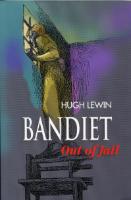
Bandiet was first published in London in the mid-70s. Hailed as a classic work of South African prison literature, it remained banned in South Africa for many years. Bandiet Out Of Jail republishes the full text of the original Bandiet: Seven Years in a South African Prison with the addition of new stories that were excluded from the original. The new book also brings together previously unpublished poems
Websites to buy the book online:
Source: ColdType
Stones against the Mirror is a moving memoir which is both a family history and a story of friendship and betrayal between people caught up in the wrenching forces of the South African Struggle. Lewin describes his progress towards a meeting with Adrian Leftwich, the man who betrayed him to the Security Police in 1964. After 40 years, Lewin is determined to meet with his long-term friend both to find out what happened at his trial and to deal with the emotions of anger and bitterness that have assailed him ever since.
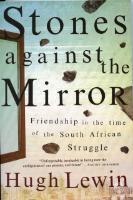
Source: Random House Struik
Derrick Dickens (1959)
Derrick Dickens majored in Fine Arts and Design at Rhodes University. In his early career he was involved in all aspects of show business, especially as a set designer and painter. In 1964 he joined the Performing Arts Council of the Transvaal (PACT), South Africa, as Head of Opera, during which period he formed and managed the PACT Symphony Orchestra.
Thereafter he became embroiled in the world of Advertising and Marketing, concluding his business career as Executive Director of the Association of Marketers, and as visiting Professor of Marketing at the University of Witwatersrand (Wits), in Johannesburg.
He began his painting career on an ad hoc basis in his spare time. After retiring from commerce and academics he started painting seriously, concentrating on aviation art. After a number of exhibitions both locally and overseas, he realised that there was very little material available on the specific aircraft of the Fleet Air Arm (FAA), especially colour illustrations.
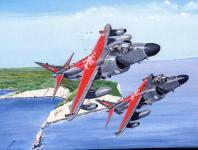
This resulted in the production of the book, Illustrated History of the Fleet Air Arm , which features paintings of every type and mark of fixed-wing frontline aircraft to serve in the FAA from 1938 to 2006. The foreword to “this splendid book” was written by the Admiral of the Fleet, HRH Prince Philip, Duke of Edinburgh. A selected portfolio of paintings from this book is now available to collectors as limited edition prints on either art paper (signed and numbered) or premier canvas (certified).
To order a copy: ddickens@mweb.co.za
Neil Harvey (1959)
Turnaround Management & Corporate Renewal deals mainly with the turnaround of business organisations.
The strategic, financial, legal, human resources, marketing and operations, stakeholder management, political, and internal and external aspects of turnaround are evaluated in depth by leaders in their fields. Also discussed in the book is the new business rescue legislation. Turnaround
Edited by Neil Harvey who has led fourteen successful turnarounds across a variety of industries in Africa, Europe and the United States from 1968 to 1999. He has since been a professor at Rhodes University and adjunct professor at Grand Valley State University in the USA.
Book Launch on 26 May 2011
Ordering Information: marketing@blueweaver.co.za Tel: 021 701 4477
Jos Lurie (1959)
Technikon Witwatersrand : A History 1925-2000
Research for this history has been on-going for some years and, since no single collections of archival materials exist, location of information has been time-consuming. As facts have been uncovered the realisation dawned that the history of this institution is not merely interesting but is truly remarkable. There are aspects that are absolutely unparalleled. The story simply has to be written. Completion of this account was timed to coincide with the 75th anniversary of the establishment of the Technikon Witwatersrand.
Jos Lurie, Emeritus Senior Director of the Technikon Witwatersrand, trained as a draughtsman after the second world war and, having completed the Trigonometrical Survey Course (since taken over by the Pretoria Technokon), worked as an hydraulic and engineering surveyor in East Africa (during the Mau-Mau rebellion) and in South Africa for some years. While in East Africa he climbed Kilimanjaro in record time.
During the field work rich deposits of rare earth elements and a large low-grade deposit of uranium and niobium were discovered. Jos Lurie also obtained the national teachers Diploma and the British Diploma in Gemmology. He joined the Technical College in 1963, lectured in the disciplines chemistry, physics, mathematics, geology and survey and was promoted to Senior Lecturer Geology and Surveying in 1967.
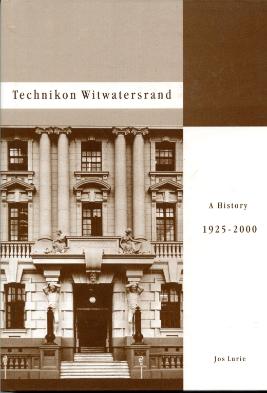
Source: AbeBooks
Jos Lurie (1959)
Dynamic 3D Symmetry
This is the first of a series of books containing plans to build paper models of polyhedral, that is, shapes with many faces all of which are flat surfaces. These polyhedra are all known geometric shapes and have high symmetry which means they have repeating parts. This gives them an attractive appearance. Some have fascinated philosophers and mathematicians since early times. A number of these shapes occur in nature as crystals of various minerals. Included are various gems such as diamonds and emeralds and even life forms such as some viruses. The construction techniques have been tested on people of all ages and it has been found that the simpler ones can be handled by relatively young persons (10 to 12 years of age). The more complex ones need to be handled by mature persons- some of those school-leaving age. Furthermore, they have been enjoyed by adult and even middle- aged persons.
The test referred to above has indicated a desirability that the models be placed in a numerical order coinciding with difficulty of construction. It is strongly advised that they be tackled in this order.
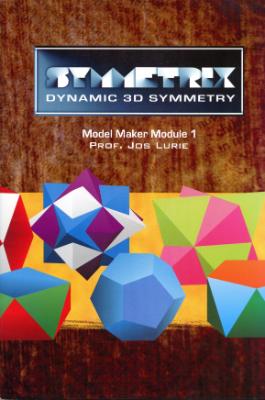
Book available at Lupon Publishers
Jos Lurie (1959)
School of Mines and its Alumni 1926-2002
This account is presented as a tribute to the role played by the school and its precursors in providing the primary industry of South Africa with trained manpower during the past seventy-six years. It is also an acknowledgement of the material support of the school provided by the industry largely through the Chamber of Mines. In terms of student numbers the part played in training and education for the minerals industry has been second to no other education for over six thousands individuals dominantly past students who have played a greater or lesser role in the industry are recorded.
The task of collecting and collating data has been accomplished largely with the help and encouragement of Peter Knottenbelt, the Technikon Witwatersrand Director and head of the School of Mines, who is of the opinion that a “who’s who” of TWR diplomates and graduates, specialising in the production side of the minerals industry, would be a useful document.
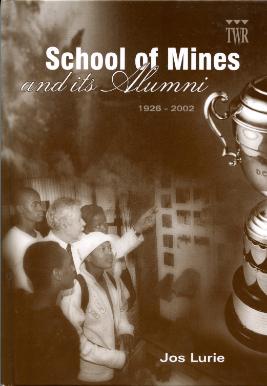
Source: AbeBooks
Jos Lurie (1959)
South Africa Geology: For Mining, Metallurgical, Hydrological and Civil Engineering
A Simply outstanding text providing a complete survey of geological knowledge and techniques developed in perhaps the most geologically-diverse country on the globe. Covers the basics of geology and mineralogy and rocks in the beginning and quickly moves to more advanced topics. The book includes excellent step-by-step techniques and examples of geologic drawing, mapping and interpretation. The book has several hundred maps, line drawings and graphs. Although the book specializes in Southern African locales, the techniques are readily transferrable to any geologic setting. Also has a full-colour geologic map of the Republic. Indexed South Africa is a puzzling geologic mystery; endowed with vast deposits of gold, platinum and other strategic materials and coal, it has puzzlingly unremarkable groundwater resources and virtually no oil. As such, this book has a distinct bent toward economic geology.
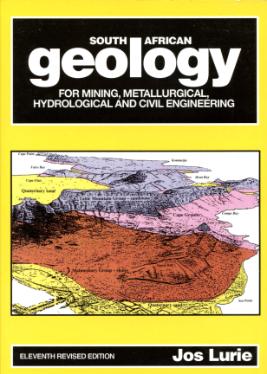
Source: AbeBooks
Robin Anderson (1960)
Crisp & Golden
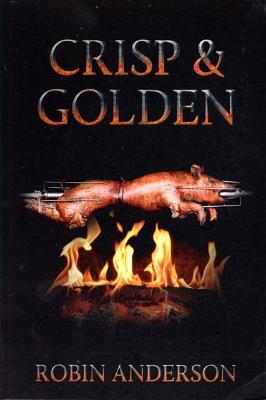
Can the combination of living in MANSON MEW, the renamed THE CORPSE (as opposed to its original THE COPSE) and a cheery nursery rhyme which sinisterly becomes a nasty rhyme ever be excused for the subsequent horrors they create? According to CRISPIN CATCHPOLE and his partner MYLES GOLDEN the answer is a resounding “Yes!” However, unbeknown to CRISPIN his very own “Daddy Dearest” – aka CHRISTOPHER CATCHPOLE –has ideas of his own. Ideas, which aided and abetted by this ruthless “clean up” team, make names such as MANSON and THE CORPSE pale into insignificance. For when the Three Little Piggies meet the Three Vees – VENOM, VITRIOL and VENGEANCE – the reader has no alternative but to grim and bear it!
Available: http://www.amazon.com/Crisp-Golden-Mr-Robin-Anderson/dp/1507608837
Robin Anderson (1960)
The Burning Bush
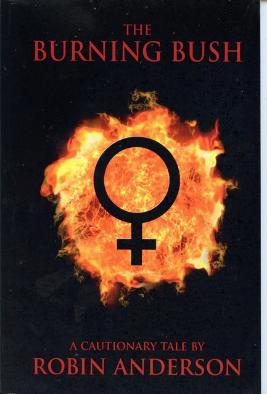
Anyone who has read previous books by the inimitable Robin Anderson is in for a treat with THE BURNING BUSH. Anderson has polished his recipe for entertainment to a fare-thee-well. He creates impossibly ludicrous characters who happen to bounce off each other in the most unexpected way, fills his story with incidents that can only fall into the 'naughty range', and yet his manner of writing is so sophisticated and a solid that about one third of the way through his books the reader realizes the farce is meant as good-humored fun and should not be taken too seriously or dissected or analyzed because the author is always just around the corner (or on the next page) with a guffaw to top all previous ones.
As is always the case with Robin's books, his own hilarious plot summaries match the paltry descriptions other attempts for synopses: "Mirror mirror on the wall, who is the fairest of them all?" "Turn away, Miss Shelagh La Verne For reflected grief will see you yearn Yearn for those glorious days of yore When lovers cried `Shelagh! More, more, more!' Those flames are dead; no longer kindled Your lonely ashes with tears are mingled."
Not that that gives away a plot, but the plot of this `cautionary tale' has the tendency to be in bits of wonderful vignettes, no overall story line. But when Robin can open a story like the following you know you are in for naughty fun: `She sat studying her shadowy reflection in the gauze-draped dressing table mirror. Reverently placing a vibrant red talon - a dead ringer to her tumble of Medusa-like red locks - against her sunken right cheek, the woman gave a long, drawn-out, theatrical sigh......'How on earth dear God, could you have ever allowed this happen to me: Shelagh La Verne, a living legend in her lifetime, a breathtaking beauty and actress supreme?' A tale of aging divas and how they cope. This tale has a bit of a twist that will surprise Robin's fans - a good surprise of very fine writing. Grady Harp, January 15
Available: http://www.amazon.com/The-Burning-Bush-Robin-Anderson/dp/1503274551
Robin Anderson (1960)
Still Life: The Resurrection
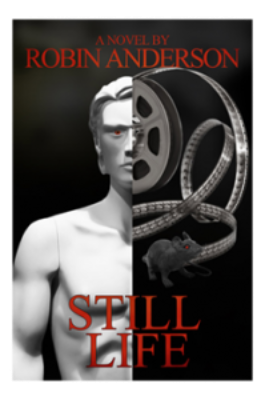
Meet ETHELRED JONES, acclaimed film director of the bizarre; CLYTEMNESTRA, his beautiful ‘bacterial’ artist wife and the rest of this discordant quintet, the disgraced ‘donor’ doctor, CHARLES CONRAD CROSBY; the priapic black giant Man Friday named MONDAY and TRISOMY - a child old beyond her years – all melded together in the creation of the ultimate cinematic and art experience, STILL LIFE.
Into this monstrous mélange comes the unsuspecting OSWALD ARGENT, an aspiring thespian more narcissus than actor, who finds himself – literally – taking ‘a step too far’ when accepting a misleading role in the meticulously planned STILL LIFE scenario. On entering the rarefied world of Bethlem Báthory, the JONES’S mysterious isolated country mansion known to the locals as Castle Dracula, the devious young OSWALD finds his film debut more gourmet than glamorous.
Enter BRYAN SCIMA, his former lover who, by chance, ends up as Lady of the Manor with distant neighbour, SIR MILES ANSTRUTHER, a wealthy property developer. Coincidence follows coincidence through never-ending scenes of gratuitous violence mixed with glamour and the grotesque.
Set in London, Italy and Morocco, STILL LIFE is an articulate, cynical novel filled with black humour at its most humorous; a volcanic-volatile hot bed of sex, greed, money and destruction. The story, which runs at a breath-taking pace, will keep the reader riveted in more ways than one. STILL LIFE is an ‘up and down’ ride which gathers momentum leading up to an unprecedented climax.
Think EDGAR ALLAN POE meets FREUD, THE MARQUIS DE SADE and NOEL COWARD in a mind-blowing gang bang and you are almost there. To quote ETHELRED JONES, ‘We stuff the snuff!’
Visit Robin Anderson's Website at http://www.robinandersonauthor-ott.com/
Robin Anderson (1960)
BOBETTE - The Ups & Downs of a Total (Male) Tart!
The story of BOBETTE – definitely a love story with a difference! – spans nigh on six decades! It tarnishes even those brightest, legendary luminaries of the “silver screen” and the writer feels privileged at having been taken into BOBETTE’S confidence – though never his bed! – and asked to reveal all. The book contains a worldly run of events at times tear jerking or – on other occasions – madcap, camp and downright maddening. How did the writer meet this much loved, much “lived-in” and much maligned hero? It all begins by witnessing the falling of BOBETTE from atop a full-size, wooden Dodo bird. Follow BOBETTE’s adventures from his early days in non-glamorous Gidding to the glamour of London, Los Angeles and finally, the exotic island of Sri Lanka where our intrepid hero blossoms into an entrepreneur-cum-impresario. Not even the destructive tsunami of 2004 can defect the determined BOBETTE from his final goals. The reader will meet the elegant RUPERT ETHERTON-SMYTHE, a key player and influence in BOBETTE’s life, plus the likes of DAPHNE SLANT and RIP REDWOOD- to mention a few. A savoury of delights – some unsavoury –is guaranteed whilst a box of tissues would not go amiss!
Available: http://www.amazon.com/BOBETTE-Downs-Total-Male-Tart/dp/1497541719
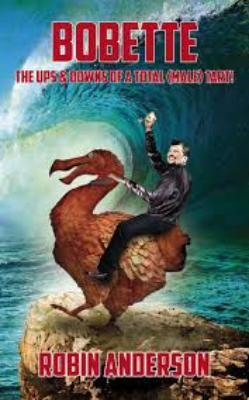 |
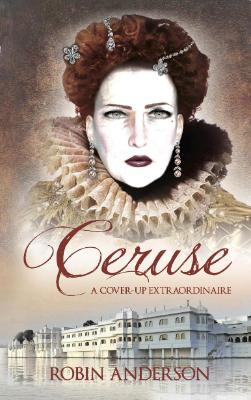 |
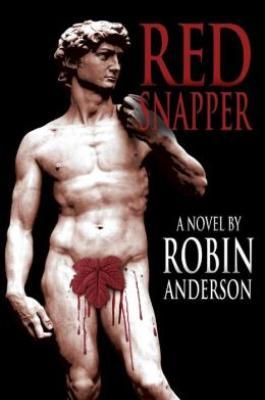 |
Ceruse - A Cover-Up Extraordinaire
Blame it all on the words RAUNCH or UNIVERSAL, otherwise why and how do the paths of an agent - hell bent on revenge - two males models, a Sophia Loren lookalike, a vindictive international photographer, a garrotte, a mysterious, white paste and Queen Elizabeth the First inevitably cross and sometimes double cross?
One clue may lie in Venice, another in Udaipur or even the Amazon jungle, but it all follows a vicious encounter between the Sophia Loren lookalike and an art student more interested in the delights of acrimony than art.
Add to this a champion “rugger bugger,” a fashion designer with a chip on his shoulder bigger than any “Dynasty” shoulder pad and the nail-biting “fun” starts to unravel!
Available: http://www.amazon.com/Ceruse-Cover-Up-Extraordinaire-Robin-Anderson-ebook/dp/B00KZZKHKI
Red Snapper
The unkindest cut of all. James Augustine-Jones has classic blond English good looks and plenty of money. He oozes talent as London's leading interior designer and he oozes sex appeal. So does his long-time friend and lover, David Prior, of Prior Properties. But James has a problem. Years ago, in his teens, he gazed up at Michelangelo's statue of David in Florence - the one that has middle-aged matrons fainting on the floor - and realised that the statue had something that James didn't: a tassel, a veil, a Walnut Whip, a foreskin - call it what you will. James resents the 'cut', resents his parents, and resolves to bite back. A series of horrendous attacks by the 'Red Snapper' hits London's Earl's Court and other gay zones. Then a handsome policeman comes on the scene, and life for James gets very, very difficult... and very, very painful. Glamorous venues ranging from Chelsea to South America and Sri Lanka, plus exquisitely observed camp banter and chintzy behaviour, mark Robin Anderson's shockingly penetrating novel as a gay masterpiece. Behind the gloss and the glitz, however, there's a stern, even moralistic, message: don't do unto others what you don't want done to yourself... Now read on if you dare! Robin Anderson was born in Scotland and educated in Rhodesia, now Zimbabwe, and South Africa. He is a recognised international interior designer, having started his London-based business in the late sixties. Red Snapper is his second novel. His first novel, Regina, set in the glossy, bitchy world of interior design, was a bestseller in the nineties. Two new novels, Sebastian and Seline and Versus, are also scheduled for publication in 2008.
Available: http://www.barnesandnoble.com/w/red-snapper-robin-anderson/1009196628?ean=9781502470379
Robin Anderson (1960)
GRADY HARP - AMAZON- "We are transvestites with taste, not transvetites of tackiness!", December 27, 2011
“Robin Anderson takes a million and one chances in this stingingly funny novel and his writing style is so adept that he knows exactly how to balance camp with storyline. A little background: Anderson was born in Scotland and educated in Rhodesia, now Zimbabwe, and South Africa and while his novels have a decidedly bent twist, his day job is that of an internationally respected interior designer. And in that field he likely has encountered much of the classy fodder he molds into this book”.
La Di Da Di Bloody Da!
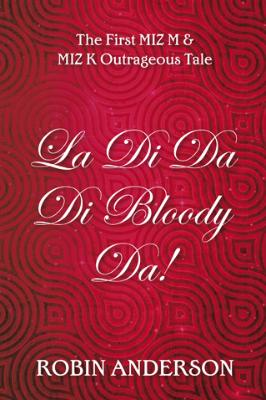
Miz Miranda Maracona and Miz Kookie Kombuis - one fair, the other so, so dark! - are two enormously talented and hugely endowed transvestites who run a special service from Soho's Old Compton Street - the M K Agency.
Looking for something different? Well, Prince Igor Pisskossovitch certainly is, and when the girls take on the Kylie Minogue lookalike as a client, they find themselves in a glorious Ruritanian foperetta in the remote principality of Bejesustan, where camp is the watchword and coups d'etat the national sport.
Divided loyalties and lingering lusts turn would-be assassins and victims into brothers in arms in this sophisticated fantasy of 'courtly' love with a special twist...A proverbial 'piss-down' ends in two fatalities that have tongues and every other appendage wagging. Who's the new Prince of Bejesustan? Surely not Mike the Spike, the porn star...?
There's plenty to relish in these pulsating pages for lovers of laughter, and indedeed lovers of all sorts. And wouldn't the world be a lack-lustre place without the likes of Miz Miranda and Miz Kookie to put a tranny in the works? Dedicated to his mucker, florid inspiration and Celeb BB occupant Miz Trump, tells you all you need to know about the world in which this hyper-story is set.
TRANNYS TO TIARAS!
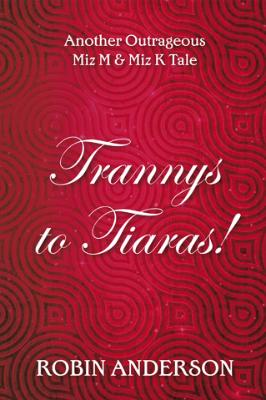
GRADY HARP – AMAZON – “Oh what these ladies/laddies can create!”, December 27, 2011
For readers fortunate enough to have happened on Robin Anderson’s book LA DI DA DI BLOODY DA! the main characters in this wonderfully irreverent farce will be unforgettably familiar – our own Miz Miranda Maracona and her compatriot transvestite Mis Kookie Kombuis – and the tale they weave this time takes camp and drag and ludicrous situations from the MK Agency (servicing special clients with special desires) in London to the exotic sounding Namibia. This time it is a diamond caper (Carol Channing would be proud!) and the story is equally as outrageous and as the forerunner in this series.
Anderson understands that fine line between comic bliss and lack of taste, and while he allows these absurdly loveable transvestite characters to get as down and dirty as the e=English language will allow, he never steps over the threshold of impropriety. How he accomplishes this is a major conundrum, but funny he is and a fine writer he is and it is everyone’s bet that he continues along this route for books to come.
Website: http://www.robinandersonauthor-ott.com/
Available from Amazon
Childrens books avaliable on Kindle
The Blow Go Bar
Another outrageously hilarious tale for Robin Anderson"
Grady Harp - Amazon
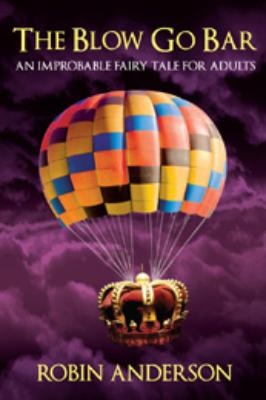
For those who have followed at least a few of the many books penned by British author Robin Anderson
this latest foray into the naughty of adult `fairy' tales will come as perhaps no surprise but will be welcomed
with a least a dozen laughs on every page. As this reviewer has written before, `Robin Anderson is a
unique writer with no imitators: no one can write hilarious fiction with as many sexy zingers and wild
characters as he.' The words stand and are embellished by this his loony foray into make believe land
(as if all of his book were not make believe, so outrageous they all continue to be!).
Anderson's ability to find character's names pushes the envelope on the Thesaurus: in this tale of Nevernever (well, maybe not never!) land some characters are named Prince Priapus, Pervey Petronella Peter, the Duke and Duchess of Tossme, Queen Troglodytic, Puba and on and on. It is a fantasy loosely based on the ugly duckling concept but oh how the story wanders into politics and double entendres - and to tell the truth the story just develops with you as you read each rapidly progressing page.
If your mood crave the bizarre and outrageous and `purple prose' all dished up with a huge dollop of frothy good fun then this is a must read. As always, Anderson's promo lines give a solid and idea of what is ahead as anyone can write and so that is quoted here: `Visit Fotzeland 2013, a Ruritanian-style country determinedly holding onto the past until Them decide to oust the other Them in a coup d'état, a coup de foudre, or even a coup de grace. Here begins a roller coaster ride of hilarious - at times almost unbelievable - happenings; an improbable fairy tale for adults without doubt. "Mirror, mirror on the wall who is the most duplicitous of Them all?" Could it be the double-crossing President in waiting or - at the toss of a fotze - the pneumatic Puba or glamorous and mysterious QT, owner of THE BLOW GO BAR? "Once upon a time ..."
With a book by Robin Anderson a comfy overstuffed chair and a dish of something very caloric near by are all that is needed to enter his world that never fails to make you head spin and your gut ache from laughing. Fair warning: highly addictive!
Website: http://www.robinandersonauthor-ott.com/
Christopher Wortham (1960)
Emeritus Professor Christopher Wortham has published a joint memoir with Anne Wortham called Fragments--from two lives on three continents, which is a close and personal view of their experiences through Australia, Europe and Africa that not only describes the beauty of the countries that they have lived in and visited, but also the people and events that shaped their thinking and their place in their community and their world. It reveals the beauty of life - from the busy cities of Europe to the indigent areas of Africa. Their book is a tribute to how human beings everywhere share an intangible link to one another.
Dimitri Philactou (1960)
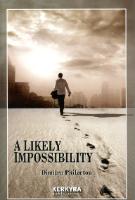
In A Likely Impossibility, Dimitri Philactou weaves a compelling story that draws on the experiences of the Greek Diaspora of Egypt and London, to tell the tale of young love whose fire refuses to extinguish itself and continues to burn through time. Dimitri and Elly are two young lovers who find themselves fighting traditions and family expectations to keep their love alive. Can fate keep them apart forever? Can their love weather the trials and deviousness that destiny and their families throw in their way? The reader follows the tale of their love starting in 50s London and through time and places like New York and Greece. At each place fate and family expectations that 'Ships marry Ships' seem to conspire together to keep them apart. Sometimes the only thing that can fan the flame of love is the belief that "A likely impossibility is always preferable to an unconvincing possibility".
Alan Penny (1961)
Has published Education Reform in Uganda - 1997-2004. Reflections on Policy, Partnership, Strategy and Implementation, DFID, London, 2006. It explores the main Education Strategic Investment Plan (ESIP) activities implemented from 1997 to 2004 (financing education reform; improving basic education quality; funding access and equity in primary education; and increasing access, equity and efficiency in post-primary education) and records the changes and lessons learned. It shows how combining political commitment with a clear and rational conception of reform, and generous external financial support, has helped the country to make significant progress towards its MDG obligations.
Claerwen Howie (1961)
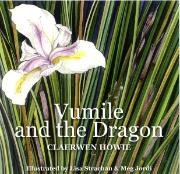
Vumile and the Dragon is a beautifully illustrated children’s book about Vumile, Katie and Joe who discover a Cape Dwarf Chameleon in Granny Ada’s magical garden.
Katie thinks it’s a baby dragon, Joe just wants to play soccer and Vumile is terrified of the Ulovane which brings bad luck. Slowly, Vumile overcomes his fear by hearing from his mom, Rosie Mbana and Granny Ada about the myths and beliefs different cultures have about chameleons. He sees the other children enjoying the little creature, and, left on his own one day, cautiously approaches the shrub where she lives. There he discovers a secret that he can’t wait to share with the others!
The story provides accurate information about the dwarf chameleon, rarely seen in our gardens today. A separate section towards the end of the book reveals other interesting facts about chameleons; and a pictorial guide to plants and creatures abundant in a Cape farmhouse garden. This is a gentle and delightful book about the need to conserve our country’s glorious biodiversity.
Vumile and the Dragon is author Claerwen Howie’s first book for children. It is a collaboration with accomplished botanical artist, Lisa Strachan and illustrator, cartoonist and water-colourist, Meg Jordi. It is perfect for readers and listeners young and old.
Book available at Print Matters
Source: Books Live
Dr Derek Botha (1961)
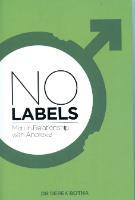
In NO LABELS: Men in Relationship with Anorexia Derek Botha argues that traditional understandings of and approaches to diagnosis and treatment for anorexia nervosa are unacceptable, inappropriate and laden with labelling ways, and thus exacerbate these men’s struggles, leaving them dishonoured, disabled, powerless and even more distressed. He presents alternative ways of understanding the nature of their social positionings as well as a more appropriate therapy for them, namely narrative therapy. Dr Derek Botha trained and practiced in South Africa and Australia in the mental health field. He has been published widely in international journals, especially in the area of critical approaches to mental health. He lives and practices in Cape Town.
Book available at amazon.com and amazon.co.uk
Malcolm Hacksley (1962)
Author of True Valour the story of Victoria Girls' High School Grahamstown 1897-1997. This is the story of the first hundred years in the life of one of South Africa's great girls' schools. As well as being an Old Rhodian, Malcolm was a former Staff member of Rhodes University (1980-1981) and was Director of NELM (The National Literary Museum) an "associated research institute" of the University and he retires at the end of 2009.
ISBN 0-620-22646-3
The Chronicles Of Jeremiah Goldswain: 1820 Settler
Ralph Goldswain (1963)
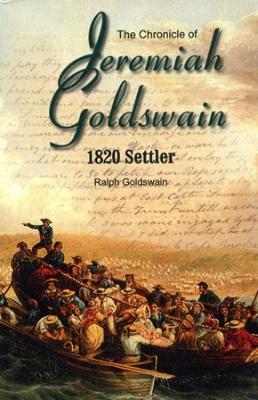
This is the story of the 1820 Settler, Jeremiah Goldswain, in his own words. After thirty-eight years on the eastern boundary of the Cape Colony, he sat down to write his memoirs. It is the close-up view of four decades during a period when the British Empire was expanding in southern Africa, with the borders being pushed over farther into the hinterland by successive governors. As a result, there was constant conflict between the African tribes and the colonist. Jeremiah was directly involved in the three of the nine Frontier Wars that occurred between 1779 and 1879.
It is the story of hardship and the struggle for survival of Jeremiah and his Family- his wife Eliza and their ten children- on one of the most volatile borders the world has ever seen. Even in peacetime the conflict and violent clash of cultures were constantly present and many settlers were murdered, including members of Jeremiah’s family. Through all this we see a man making his way to a world he could not have imagined while growing up in rural Buckinghamshire. He lived during an important historical time for South Africa, not only observing and fighting the wars, but meeting and serving with some of the most famous names in South African history. He saw, in detail, the effects of the Cattle Killing of 1856, the Boer uprising in the Orange River Sovereignty, as well as several other famous and notorious historical events.
The text has been published once only – by the van Riebeeck Society in 1949- and since then has been used by scholars and historians as a primary source. It has not been widely read, because Jeremiah had no education, and although he had an extraordinary ability to describe experience and express his emotions, he was a stranger to the conventions of written language. Now Ralph Goldswain has transcribed the original text into an accessible account of forty years of frontier history.
Available: http://www.30degreessouth.co.za/the_chronicle_of_jeremiah_goldswain_big.htm
Michael Sheridan Stone (1963)
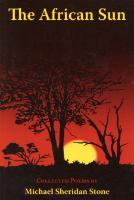
The African sun is an eclectic collection of poems linked by one common element, the author’s abiding love for Africa – its landscape, wildlife and, above all, its people. He rejoices in adventures with elephants, leopards, lemurs, snakes and elusive birds, protests at the precipitous decline in the quality of life in his former homeland of Zimbabwe (whilst taking some comfort from the enduring tradition of Ubuntu) and gently bemoans his failure to reclaim his boyhood past.
Prof Patrick Terry (1963)
SAICSIT (the South African institute for Computer Scientists and Information Technologists) gave a Pioneer in Computer Science and Information Technology award for 2010, to Prof Terry. The award is to honour persons who have made major contributions over a lifetime to the disciplines of Computer Science and Information Technology in South Africa. Professor Emeritus in the Department of Computer Science at Rhodes University, he has published six textbooks.
Latest compiler textbook:
Compiling with C# and JAVA (Pearson Addison Wesley, 2005)

Compilers are essential to computer programming. They translate statements made in a particular programming language into low-level machine code which the computer can understand. Compiling with C# and Java is a practical introduction to how this is achieved for stack machines such as the Java Virtual Machine (JVM) and .NET Common Language Runtime (CLR), and is ideal for students needing an introductory text on compilers or anyone with a general interest in the topic.
An earlier textbook on compilers:
Compilers & Compiler Generators – An Introduction With C++ (Pearson Addison Wesley, 2005)
Written to support a practically oriented course in programming language translation, this book combines theory, practical applications and the use of compiler writing tools to give students a solid introduction to the subject.
His first compiler textbook:
Programming Language Translation – A Practical Approach (Addison Wesley, 1986)
This book provides a pragmatic and practically oriented course in programming language translation.
The book uses standard Pascal throughout. Students are encouraged to explore areas of language design and implementation through carefully integrated practical work. Complete case studies serve as a foundation for the many challenging projects and exercises.Assemblers and compilers are discussed. Rudiments of the implementation of data abstraction and concurrent programming are discussed.
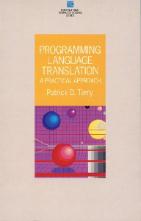
Modula-2 textbook:
An Introduction to programming with modula-2 (Addison Wesley, 1987)
This book provides an introduction to programming for readers with little or no experience of imperative programming. It uses pre-ISO Modula-2, the original form of the programming language designed by Niklaus Wirth as a successor to Pascal. Modula-2 was designed both as a systems programming language, and as one with high-level abstraction features for dealing with complex systems. While the system programming language features lie beyond the scope of the book, the abstraction features have enabled a vital approach to programming to be adopted, one which continually stresses the importance of data abstraction when solving problems. The text is supplemented with a wealth of examples and exercises, making it an ideal course book for first year students.
His Polish Modula-2 textbook:
Uczymy sie programowac na przylkadzie Moduli2 (Wydawnictwa Naukowo-Techniczne, 1992)
Fortran Book:
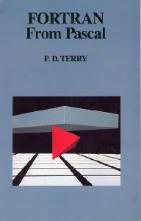
Fortran From Pascal (Addison Wesley, 1987)
The aim of this test is to equip programmers already familiar with Pascal with a working knowledge of Fortran, enabling them to feel competent to address major problems using this second language.
Standard Pascal and Fortran 77 are the languages discussed. Students of engineering applied mathematics and science, and computer science will find this book an essential guide for conversion from one language to the other. It will also be invaluable to professional programmers.
Draft Java textbook:
Programming with Java - an algorithmic introduction (On the web only at present)
Source: http://www.scifac.ru.ac.za/cspt/index.htm
Source: http://cs.ru.ac.za/news/PDT_SAICSIT_Award.php
Rosemary Snead (1965)
Celtic Reflections
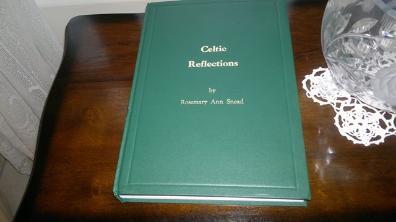
Rosemary was a music student in the Department of Music under Georg Gruber/ a member of the Rhodes University Chamber Choir. She was also secretary to the choir /secretary to the Music Department during her studies. She studied 4 majors, singing, pianoforte, conducting and choir training.
She recently returned from Ireland after writing the book which was printed and bound by Kenny’s Bindery in Galway Ireland. The book together with a donation of programmes from operas, and theatre activities were donated to Cory Library which specifically represents people of the Eastern Cape.
The book is biographical and traces Rosemary’s stage and singing career as well as geneaology of her Eastern Cape family. It includes an anthology of poetry and some interesting early Cape photography and journeys of her family.
Her uncle can be traced back to King Richard the I, II and III and the Plantagenets and his wife, Rosemary’s aunt Catherine Steed, sang with Lily Pons and performed at the San Francisco and the Metropolitan Opera Houses.
She also sang at the inauguration of the Union of South Africa at the Voortrekker Monument when she was 12 years old.
There is a digital cd copy of the book contained on the back leaf of the book.
The book will be housed at Cory Library where the book/or the cd could be read.
Andre Van Heerden (1965)
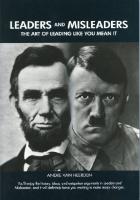
Andre van Heerden’s Leaders and Misleaders – the art of leading like you mean it flays the misguided belief that we can produce leaders through skills-training and quick-fix solutions, and insists that the key is character-development and the fomenting of wisdom through on-going education. Giving skills to people of negative character will see those skills misused, and this is why our society tends to produce misleaders rather than leaders.
Andre van Heerden, who has worked with leaders in almost every category of business, uses compelling examples from history and corporate life to demonstrate how leaders are only developed by education, the continual nurturing of the intellect and the will. Everyone has intellect and will, and therefore the potential to lead, and using those faculties properly, is leading like you mean it. But without on-going education, they are either corrupted or fade. Before committing another cent to leadership development for your team, read this book and discover:
- What leading like you mean it really means
- Why misleaders are everywhere, but great leadership is hard to find
- The vital understanding of leadership that presidents, CEO's, and managers are missing
- What we as a society can do to change the status quo in the coming decade.
WEB-SITES: www.powerofintegrity.com www.leadersandmisleaders.biz
Any queries please e-mail alumni@ru.ac.za
Prof Billy Futter (1965)
Author of I'm Thinking Of Buying A Pharmacy which is a lively, readable guide to starting a small business in South Africa and is primarily aimed at the entrepreneurial pharmacist, but business principles and procedures are very much the same for any small business. Dealt with are subjects as diverse as business objectives ; data selection, collection and evaluation; financial diagnosis; planning and management; marketing strategies; and personnel management. Soft cover. (EM 8-10 / AM 8-10)ISBN 0-9583083-1-4
Source: http://ru.za.libguides.com/content.php?pid=27382&sid=198771
Terry Tastard (1965)
Father Tastard is a priest of Westminster Diocese and a Research Associate of the Von Hügel Institute, St Edmund’s College, Cambridge and is the author of Ronald Knox and English Catholicism.
Ronald Knox was hailed as one of the brightest minds of the Edwardian era, and his decision to become a Catholic shocked many of his contemporaries. He was to be one of the most outstanding recruits to the Church of his generation. He defended and commended the Christian faith in general, and Catholicism in particular. Knox's writing, broadcasting and preaching made a profound impact on his fellow Catholics and his lucid expositions of Christian teaching found a wide audience.
Source: http://www.amazon.co.uk/Ronald-English-Catholicism-Terry-Tastard/dp/0852442505
Andre Van Heerden (1965)

Andre van Heerden’s Leaders and Misleaders – the art of leading like you mean it flays the misguided belief that we can produce leaders through skills-training and quick-fix solutions, and insists that the key is character-development and the fomenting of wisdom through on-going education. Giving skills to people of negative character will see those skills misused, and this is why our society tends to produce misleaders rather than leaders.
Andre van Heerden, who has worked with leaders in almost every category of business, uses compelling examples from history and corporate life to demonstrate how leaders are only developed by education, the continual nurturing of the intellect and the will. Everyone has intellect and will, and therefore the potential to lead, and using those faculties properly, is leading like you mean it. But without on-going education, they are either corrupted or fade. Before committing another cent to leadership development for your team, read this book and discover:
- What leading like you mean it really means
- Why misleaders are everywhere, but great leadership is hard to find
- The vital understanding of leadership that presidents, CEO's, and managers are missing
- What we as a society can do to change the status quo in the coming decade.
WEB-SITES: www.powerofintegrity.com www.leadersandmisleaders.biz
Any queries please e-mail alumni@ru.ac.za
Mike Bruton (1966)
When I was a Fish
This fast-paced, highly readable book not only recounts the extraordinary life of Mike Bruton, one of the leading fish biologists in Africa, but also explores and discusses the various issues and topics in which he was involved as a scientist, conservationist and science educator. Through funny, peculiar and sometimes alarming episodes during his career, Bruton shows that an aquatic scientist’s life is a story worth telling!
He became obsessed with fish during his early childhood and carried this passion with him throughout his career. Bruton was born in the town where the first living coelacanth was discovered and studied at Rhodes University in South Africa at the same time as the great ichthyologist, Professor JLB Smith, who described ‘old fourlegs’. He subsequently became Director of the Ichthyology Institute established in Smith’s name and pioneered searches for the coelacanth off the coast of southern Africa and in the Western Indian Ocean using the German research submersible, ‘Jago’. Together with colleagues from South Africa, the USA, Canada and Germany he made many new discoveries on the biology of this extraordinary fish and campaigned internationally for its conservation.
Bruton’s research on the freshwater fish of Africa and the Middle East lead to entanglements with crocodiles, hippopotami, giant snakes and military operations but also allowed him to contribute to international efforts to conserve wetlands and endangered species. He also made major contributions to our understanding of the ways in which fish are adapted to their watery environments and how they made that epic evolutionary transition from water onto land. Whether or not you are a fisherman, aquarist or sushi eater, you will be fascinated by these astonishing tales of a man who almost became a fish!
Duncan Clarke (1966)
With 40 years background in economics, and 27 years' experience inside the global exploration industry, Duncan Clarke is Chairman and CEO of Global Pacific & Partners. He has been an adviser to international oil companies, governments, national oil Companies, multilateral institutions, and private clients on six continents.
Africa's Future tells the tale of Africa’s economic evolution, providing unique prisms through which to view the continent’s panoramic story – ultimately one of triumph over the influences of nature and over multiple political tragedies. It explains how Africa in effect went backwards for one and a half thousand years, from the Roman Empire to 1500 CE. Only in more recent times has Africa gradually begun to evolve and grow, to the point at which its modern and archaic economies uneasily coexist today. Duncan Clarke, acclaimed author of Africa: Crude Continent and an acknowledged expert on the economics and geopolitics of Africa, provides fresh and challenging insights into our vision of Africa’s economies and future, offering seasoned views on a continent of enormous potential which has witnessed many false dawns.
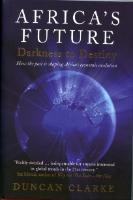
Book available at Amazon.com
The Battle For Barrels: Peak Oil Myths & World Oil Futures
It is widely accepted that global discoveries of conventional oil have peaked and that the era of cheap oil has gone forever. This book demonstrates that the doom and gloom of the "peak oil" theory is mistaken. Clarke rebuts the arguments of peak oil's adherents and discusses the issues they ignore--rising crude oil prices, new or future technologies, the potential to improve exploration acreage, changes in government policies, new corporate strategies, development in unconventional oils, and more. The Battle for Barrels demonstrates that the doom and gloom of the peak oil theory is mistaken. Duncan Clarke rebuts the arguments of peak oil's adherents and discusses the issues they ignore--rising prices, new or future technologies, potential improved exploration, access to restricted world oil zones, changes in government policies, new corporate strategies, and more.
Source: http://www.flipkart.com/battle-barrels-duncan-clarke-peak-book-1846680123
Crude Continent: The Struggle for Africa's Oil Prize (Profile Books, London, 2008) provides an insight into Africa's oil history and is an in depth exploration of the continuing struggle for oil. Deconstructing the myths surrounding the Dark Continents "oil curse", Clarke exposes its fundamental realities and explains how this crude bounty is transforming an entire continent.
Source: http://www.amazon.co.uk/Crude-Continent-Struggle-Africas-Prize/dp/1846680972
Empires of Oil: Corporate Oil in Barbarian Worlds
In Empires of Oil Duncan Clarke explains where the new empires of oil will be around the world, the hidden threats and unknown enemies, and where companies have gone wrong and can improve their global strategies. Empires of Oil reveals how the world will change because of global battles over the commodity that underpins our lives.
Source: http://www.amazon.ca/Empires-Oil-Corporate-Barbarian-Worlds/dp/1846680468
Books available at www.amazon.co.uk
John Gouws (1966)
Nicholas Oldisworth’s Manuscript (Bodleian MS. Don.c.24)
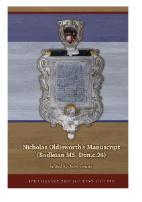
Edited by John Gouws (Professor Extraordinary, North West University, South Africa)
This edition makes available for the first time a collection of poems assembled as a possible wedding anniversary gift by the author, Nicholas Oldisworth, for his wife. Within weeks of completing the manuscript, Oldisworth, a devout and dutiful clergyman, died of the plague in 1645. The collection is valuable for its own sake, since it presents a series of poems of above average quality written mostly between 1628 and 1636. There are not many such autograph collections, and certainly none in which the author annotates the occasion of writing many of the poems. For this reason it is a significant contribution to the understanding of poetic communities in Caroline England. The edition would be of value to those working in the fields of Early Modern Studies in general, not simply English Literature, history, or textual and manuscript studies.
Website: http://www.acmrs.org/publications/mrts/crets.html
Gouws
Paul Skelton (1967)
Professor Paul Skelton is the leading scientific authority on freshwater fishes in southern Africa, a field in which he has worked professionally for 30 years. He is the managing director of SAIAB and A Complete Guide to the Freshwater Fishes of Southern Africa 2001 edition includes all the indigenous freshwater species of the region as well as 24 marine and estuarine species commonly found in southern African freshwater habitats.
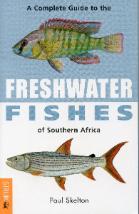
The J.L.B. Smith Institute of Ichthyology – 50 years
Edited by Prof P.H. Skelton (1967) and Prof J.R.E. Lutjeharms (Hon Grad 2006)
Published by the Royal Society of South Africa, Volume 51
This book published in 1997 records for historical posterity the story of Ichthyology in Grahamstown. Fifty years is a short span of time and some might say that it is too short a span to measure the accomplishments of a scientific discipline such as Ichthyology – but there is a great need to records the origins whilst the grasp of that origin is still with the grasp of living individuals.
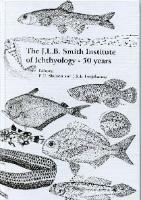
The book records the legacy of two outstanding South African scientists who were responsible for Grahamstown being the unusual setting for the study of Ichthyology. The legacy of Professor J.L.B. Smith and Dr Rex Jubb is evident in three prestigious organisations; The J.L.B. Institute (now incorporated within The South Africa Institute of Aquatic Biodiverty - SAIAB), the Department of Ichthyology and Fisheries Science (DIFS) at Rhodes University and the Fish Section of the Albany Museum.
It documents historical highlights including the discovery of the Coelacanth and records snippets of the lives of those who have been involved science through the period of the book.
Paul Maylam (1967)
The Cult of Rhodes - Remembering an Imperialist in Africa
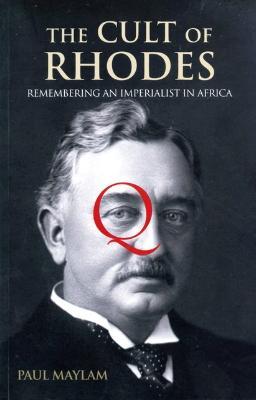
Cecil Rhodes is the most written about and memorialised figure in southern African history, the subject of well over 25 biographies and numerous articles. Rhodes has featured in novels, plays and films. Rhodes' gravesite in the Matopos hills was for decades a place of pilgrimage, and there are imposing monuments to him, notably in Cape Town, Oxford and Kimberley. Why such a cult should have developed around Rhodes, who, to all accounts, was far from admirable a person and was open to severe criticism on many fronts, is the subject of this title. Himself no admirer of Rhodes, the author's approach to the subject is ironical and critical as he sets out to address the paradox of why such an unappealing and 'rather mediocre person' should have been so venerated and commemorated. Many topics are explored in this context, including the imprint of Rhodes' ecological imperialism on the natural environment, the debunking of Rhodes after World War II, the surprising silence from Afrikaners and Africans in critical studies of Rhodes, and the (rather strange) link-up between the Rhodes Trust and the Mandela Foundation. Although two recent centenaries - the centenary of Rhodes' death (2002) and the founding of Rhodes University (2004) - have not attracted much attention, the third - the centenary of the Rhodes Scholarships (2003) - was celebrated in different parts of the world; its lustre derives in no small part from the fame of the recipients of Rhodes Scholarships. Rhodes' memory, meanwhile, has been deliberately, sometimes violently, erased in the country once named after him, where his grave still remains in close proximity with that of the great Ndebele king Mzilikazi. The cult of Rhodes is fascinating reading for all, including the thousands who, in one way or another, are connected with the name of Rhodes. A study of memory and representation, it helps to explain the making of legends and our invention of heroes.
Available: http://www.amazon.com/The-Cult-Rhodes-Remembering-Imperialist/dp/0864866844
Roger Wanless (1967)
Roger retired a few years ago as the MD of Commercial Union Assurance. He first set foot in Greece in 1975 and has visited the mainland and islands on many occasions since. His has written three books which have been self-published:
Olives and Ouzo - a journey through the Peloponnese (southern Greece).
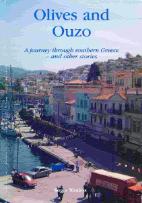
Cretan Bull - travels through central Crete - history, archaeology and myth.
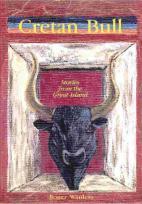
The Ancient Olympics - history, archaeology, and tales of great heroes.
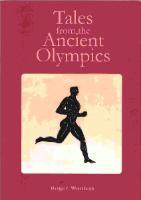
Roger - B.Com 1969 and LL.B 1972 was the SRC President in 1970, Vice Chairman (to Prof Chapman) of the Rhodes Club in 1971, and played several games for the 1st XV. He was also sub-warden for two years in Botha, when Dave Woods was the Warden. If anyone would like to place an order for the books, please contact him at awanless@iafrica.com
Chris Walmsley (Nevin Weakley) (1968)
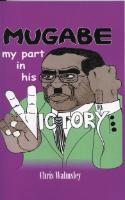
Mugabe-my part in his victory' is a light-hearted but factually based look at national service in the Rhodesian police force immediately prior to Robert Mugabe’s accession to power in Zimbabwe. It follows the transition of Chris Walmsley and his university friends from raw, high spirited recruits to disciplined and competent policemen.Not that this is a straightforward process. The police officers, recruits and Mugabe all had different ideas on how this should be achieved. They could not all be right….
Available from Amazon.com in paperback or kindle edition
Also available at bookorder@mpa.com Tel: 072 439 4133
Marguerite Poland (1968)
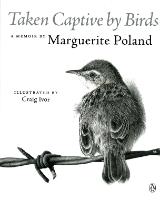
Taken Captive by Birds: A Memoir by Marguerite Poland and illustrated by Craig Ivor
All my life I have been 'taken captive by birds'. Their doings are the thread that runs through childhood, the link to people and to place. Their appearance and their presence can at once recall a name, a scent, a morning full of song and exploration; an evening sorrow, a childhood fear. For, somehow, it is the birds that saw it all: those unobtrusive harbingers whose boundaries are defined by other laws than ours but whose ancient lore remains a cipher to remembrance for me.
Marguerite Poland is the recipient of a Lifetime Achievement Award for English Literature from both the Departments of Arts and Culture (2005) and SALA (2010).
Book available at kalahri.com
Anthony Akerman (1969)
Dark Outsider Three Plays
Life in exile, the poet Roy Campbell, and the world of a boys' boarding school are the three topics explored in this, the first collection of the work of one of South Africa's leading playwrights, Anthony Akerman.
A Man out of the Country is set in the South African exile community in Amsterdam. A community of which Akerman was himself part of. The play dramatizes the conflicts arising from the existential and political issues that confronted those people who left South Africa during the apartheid years.
Dark Outsider, which won the 1993 SACPAC Drama Prize and earned its author the 1995/96 Vita Playwright of the Year Award, deals with the Campbell's tempestuous marriage. The centrepiece of the play is the love affair between the bisexual Mary Campbell and Vita Sackville-West, and the lasting effect this had on Campbell's attitudes and creativity.
Old Boys, which won the 1996/97 Vita Award for Best Script, explores the dynamics of male interaction in the rarefied atmosphere of an exclusive single-sex boarding school. It also examines the way in which the past lives on -albeit filtered through selective memory -in the lives of old boys.
Dispatched from and sold by Amazon
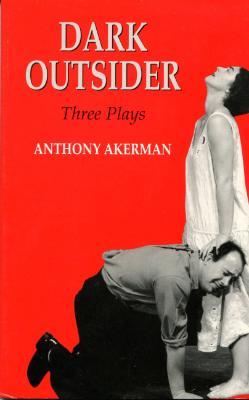
Somewhere on the Border
The horrors of a lost generation will are brought into stark relief in Somewhere on the Border, written by Anthony Akerman. The play was written by Akerman while in exile, intercepted in the post and banned as a publication by apartheid censorship because the language was considered “offensive” and the portrayal of the South African Armed Forces “prejudicial to the safety of the state”.
In the 1980s somewhere on the Border took a stand against young white conscripts being sent to the border. The play retells the story, and shows it can help those former conscripts to process what they went through and arrive at some form of healing or closure says Akerman. This publication of a one-act version of the play brings the Border War back into public discourse and pierces through the armour of silence, secrecy and shame that still surrounds it. The script is complemented by an author’s preface an afterword by historian Gary Baines, as well as photographs of its 2011 production.
Anthony Akerman went into exile in 1973 and lived in Amsterdam, working in the theatre as a playwright and director. He returned to South Africa in 1992 and has since written several award-winning plays. He also writes for radio and television.
Source: kalahari.com
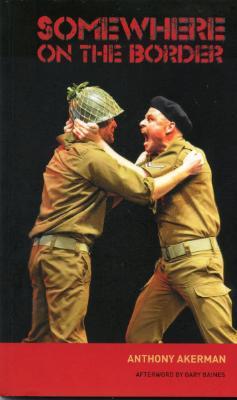
Michael Gerald Dalton (1969)
Wild West Adventures in the Great African Bush is written by David Robert Dalton with contributions by Michael Gerald Dalton, Trevor Charles Dalton & Garth Hugh Dalton.
A downright hilarious and heart-warming tale of the African "Wild West" and the notorious "Dalton Gang" shown through the fertile imagination of a six-year-old boy, his little black "Pawnee" friend, his three-legged Jack Russell dog and his three elder brothers. It is loosely based on the author's childhood in the small town of Messina, near the Southern Rhodesia border, in the early 1960's.
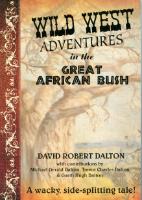
Tony Peake (1969)
After graduating, Tony moved to London, where he worked under Charles Marowitz and Thelma Holt as production manager at the Open Space Theatre. A spell on Ibiza, teaching English, History and Drama and helping run a stall in the Hippie Market, was followed by a return to London and jobs in modelling, acting and film distribution. For the last thirty years he has been a literary agent. As a short story writer, he has contributed to four volumes of Winter’s Tales, The Penguin Book of Contemporary South African Short Stories, The Mammoth Book of Gay Short Stories, The Gay Times Book of Short Stories, New Writing 13 and Seduction, a themed anthology which he also edited (1994). He is the author of three novels, A Summer Tide (1993) and Son to the Father (1995), and North Facing (2017), and a biography of Derek Jarman (1999).
More information at: www.tonypeake.com
Buy North Facing on Amazon
Buy Derek Jarman on Amazon
Buy Son to the Father on Amazon
Buy A Summer Tide on Amazon
Buy Seduction on Amazon
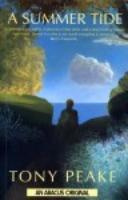
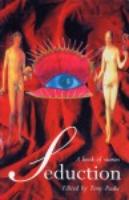
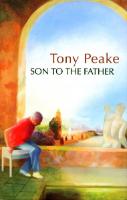
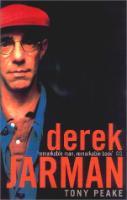
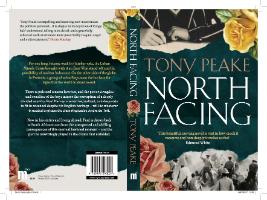
Mercia Joan (Wilsworth) Waring (1969)
Mercia is a third-generation South African who was a journalist for several years before moving to Grahamstown in 1969 to enrol as a fulltime student at Rhodes. Published in 1980, Strategies for Survival: Transcending the Culture of Poverty in a Black South African Township, identifies some of the material and sociocultural resources and strategies for survival used by an African community suffering from gross socio-economic deprivation both because of the political infrastructure and wage levels largely below the poverty datum line.
Mercia has operated as an applied anthropologist since 1980, designing and piloting various economic development initiatives in Grahamstown, Cape Town and Pretoria.
Last Modified: Tue, 22 May 2018 08:59:48 SAST

